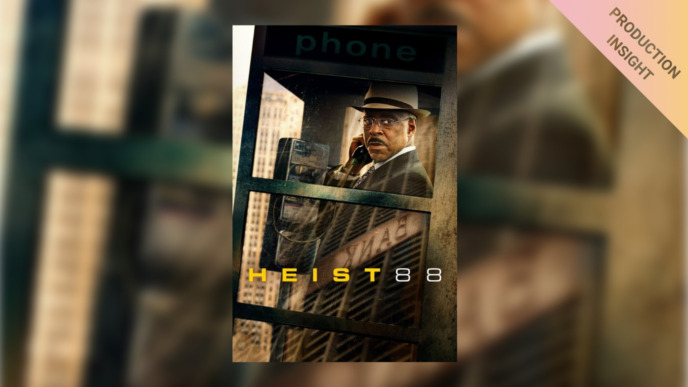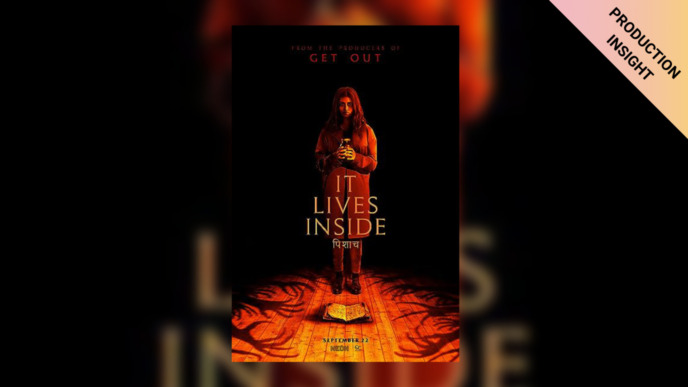
With only one month left in the production of the second season of the HBO series The White Lotus, the DP and the set changed. In order to maintain look and color consistency, DIT Leonardo Frosina relied on the recording feature within Livegrade Pro to match scenes shot in the newly constructed set with pre-recorded references.
NEW: Scroll to the bottom to find a link to the audio version of this article!
Leonardo Frosina is a Rome-based DIT from Sicily who got his start in the film industry about 10 years ago as a data wrangler. He had previously worked in TV, and even written and directed an indie movie.
“I’m an electronics geek, and one of my duties while working in TV was camera control and color balancing.”
Therefore, the transition into the role of DIT felt quite natural for Leonardo.
“One of the things I like the most about the job is balancing the cameras in real-time or matching two different takes after the sunlight has changed; like the song by Queen… ‘it’s a kind of magic’.”
As a DIT, he has experience in commercials, TV, films, and streaming. Most recently, he worked on the second season of the smash hit Netflix series The White Lotus.
“I’m so proud to have worked on this production. [It] was shot in Sicily, most of the [crew] was Italian, and the show won two Golden Globes.”

One of the first tasks for Leonardo was to correctly emphasize and match the Sicilian sunlight.
“I was introduced to DP Xavier Grobet by another DP I had worked with, Javier Aguirressarobe. After my interview with Grobert, I sent him a mood book with ten pictures summarizing the colors of Sicily.”
Leonardo then created a base grade and worked with Xavier in the days before the shoot, up until the first week of shooting to come up with a show look.
“Thanks to Livegrade Pro, we achieved a good result.”
But on top of Leonardo’s color grading and look-creation responsibilities, he had to adhere to the established HBO workflow, and the post-production house’s (Company3) requests.
“In order to do this I had three very important people by my side- Enzo Parente, Data Manager and Dailies Colorist Edoardo Aleandri, and Gastone Ferrante.”

Enzo used Silverstack to back up and record all of the necessary metadata. Leonardo describes Silverstack as a “rock-solid software” with unmatched reliability, so deciding to use it was an easy choice.
Edoardo worked in a “Kiwi near set lab,” Kiwi being the “biggest Italian workflow management company.”
And finally, Gastone, who is one of Kiwi’s “top men,” assisted the team remotely from London.
“Thanks to [all three of] them, I was able to sleep peacefully.”
The three cameras that the crew used to shoot season two of The White Lotus, were the ALEXA Mini, shot in Open Gate, ProRes 4444, 1.78:1 spherical with Panavision Primo lenses.
The Workflow

After establishing the base look with DP Xavier, Leonardo continued to use Livegrade Pro for color grading and matching looks on set.
“First of all, I checked the exposure and applied a base CDLs (our base look) on a Company3 LUT. Our color space was 709 SDR. Then, I matched the cameras. Most Primo lenses have weird colors sometimes, so the newly generated CDLs were exported and applied for editorials.”
Enzo would then take those exported CDLs and perfect the dailies through DaVinci Resolve.
The workflow supported by Livegrade Pro and Silverstack not only made the production process smooth and seamless, but it more or less saved Leonardo and his small team of three. Just when they were about one month away from wrapping, the DP changed and the set moved from the actual hotel to a reconstructed set on a stage.
Ben Kutchins, the DP from the first season came back to finish up the final month of shooting in the second season. He hadn’t been involved in the second season at all until this point, so Leonardo had to rely heavily on previously recorded footage in Livegrade Pro as a reference for Ben.
“The possibility to record each clip shot literally saved me. In my opinion, having all of the footage, and not just the frame grabs, in the archive is essential in any TV show.”
Not only was Leonardo using these shots as references for Ben, but they were also extremely helpful in matching the scenes on the stage to the previous ones shot in the hotel.
“[Ben] hadn’t shot a single take on the previous set, so we had to make connections with the scenes shot in the corridors of the real hotel. Thanks to my archive, I could use clips recorded with Livegrade as a reference. Obviously, there are other ways to have references on set (e.g. online proxies, q-take, recordings etc.) but having them directly on a calibrated monitor is priceless.”
Working Closely with the DP
Working so closely with both DPs on set, it was important for Leonardo to have software that helped him accommodate the needs of the DPs and foster a seamless transition between the two. Livegrade Pro allowed Leonardo to support his collaboration with the new DP and strengthen both of their workflows.
In general, he described his working relationship with both DPs as “excellent.”
In the beginning, their workflow looked a bit like this:
Leonardo would present a grading proposal to the DP, which they would then take to the gaffer and the lighting programmer. Together they would discuss and work with this proposal until they arrived at the DPs desired outcome.
“Sometimes we needed an adjustment on the lights’ temperature, or color grading, other times both things. [Overall], it was a good team effort.”

Leonardo recognizes that he doesn’t think he could “do without Livegrade [Pro] on set.”
It’s a rather robust software, and although Leonardo doesn’t “have time to use all of the functions,” that’s what he loves so much about Livegrade Pro because it “allows you to use just what you need, and fast.”
Challenges and Memories of Set
Getting to shoot the series off the coast of Sicily, and in “one of the most beautiful hotels in Italy,” was a major plus for Leonardo; however, it didn’t come without its challenges.
When shooting both in the hotel and on the boat, the crew didn’t have enough space for all of their gear.

“It was hard for everybody because there was no space for our stuff, and furthermore, some people were suffering from seasickness. I remember Jennifer Coolidge acted with a bucket under the table for fear of getting sick. However, despite the logistical issues, I was able to continue using Livegrade: I brought a monitor and two LUT boxes which I controlled via wifi on my laptop, so even on the boat I was able to do some color grading.”
Aside from the challenges and the technical aspects of working on The White Lotus season II, Leonardo cherishes the opportunity to have worked with actor Murray Abrahams and the opportunity to have been on the same set where The Godfather was shot.
Finally, we asked Leonardo if there was anything we left out.
“Nothing else, I just want to say thanks to all the White Lotus company for the wonderful experience. And, thank you to Pomfort for the interview!”
A big ‘thank you,’ to Leonardo for sharing his insights into The White Lotus Season two with us!
Listen to This Article!
You are currently viewing a placeholder content from Spotify. To access the actual content, click the button below. Please note that doing so will share data with third-party providers.
More InformationThe State-of-the-Art Digital Imaging System
Leonardo Frosina, DIT
Leonardo Frosina is a DIT based in Rome. After ten years of activity in TV as an operator and camera control, he began his career in cinema as a data wrangler. He works in both feature films and commercials and has worked with many international DPs in the last two years.



